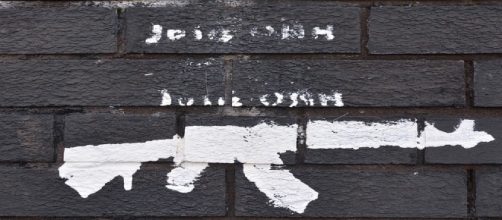DUP leader, Arlene Foster, has suffered a humiliating defeat in the Assembly election.
The former Northern Ireland First Minister won the poll in Fermanagh and South Tyrone, but she was crushed in the first round. She will have to enter a second round.
Yet she was still hoping to get elected.
Other bruising defeats included Alex Attwood, SDLP, who lost his West Belfast seat, and Danny Kennedy, UUP, in Newry and Armagh. Both of them are former ministers.
Sinn Fein triumphs
The night belonged to Sinn Fein, who achieved significant gains overall, with voter participation at its highest since the 1990s.
All of Northern Ireland's parties competed in its 18 constituencies, but the DUP topped the poll in regards to share of the vote. Sinn Fein came a close second, behind the unionists by just 1,168 votes.
The DUP achieved 28.1% of votes cast, but their share of the vote has decreased by 1.1%. Despite this, Sinn Fein gained 27.9% of votes cast, with their vote share having increased by 3.9%. Even the Ulster Unionists witnessed their vote share increase by 0.3% to 12.9% and the Alliance achieved 9.1% of votes, an increase of 2.1%. However, the Social Democratic and Labour Party saw their vote share decrease by 0.1% to 11.9%.
The current Sinn Fein Stormont leader, Michelle O'Neill, was re-elected in her Mid Ulster constituency, as was Alliance leader Naomi Long.
64.78% of eligible voters in Northern Ireland participated in this snap election, which represents almost two-thirds of the country's population. This substantiates into a 10% higher turnout than last year's election.
Altogether, 812,783 votes were cast yesterday in an election that was sparked by the dismantlement of devolved government six weeks ago following a scandal over a disastrous energy renewable scheme.
Highest turnout since 1998
The last time the turnout was this high was during the first Assembly election in June 1998, after the Good Friday Agreement was signed, when 69.88% of the population cast their ballots.
But this bigger turnout may be mostly down to increased participation from nationalist voters and supporters of the centrist parties.
Fewer candidates, fewer seats
The Assembly consists of 90 seats, five in each of Northern Ireland's 18 constituencies. With the number of seats cut since last year, only 228 candidates contested this time, which marks a decrease since 2016.
This was part of a cost-cutting exercise to reduce Stormont's 108 seats in time for the 2021 election.
Former Sinn Fein Stormont leader, Martin McGuinness, resigned as deputy first minister and triggered the early election after the renewable energy scheme collapsed, which has soured relations between Northern Ireland's largest unionist and nationalist parties since. The scheme was expected to cost taxpayers £490m. Northern Ireland Secretary James Brokenshire then issued the snap poll.
They will have three weeks to form a power-sharing administration or witness a return to direct rule, which has not happened since 2002.
Northern Ireland uses the single transferable vote- a type of proportional representation- to elect its members of the legislative assembly. Unlike first past the post, which is used for UK general elections, the number of seats reflects the number of votes cast. This was introduced to the nation to end unionist dominance.
The final round will be declared on Saturday.

